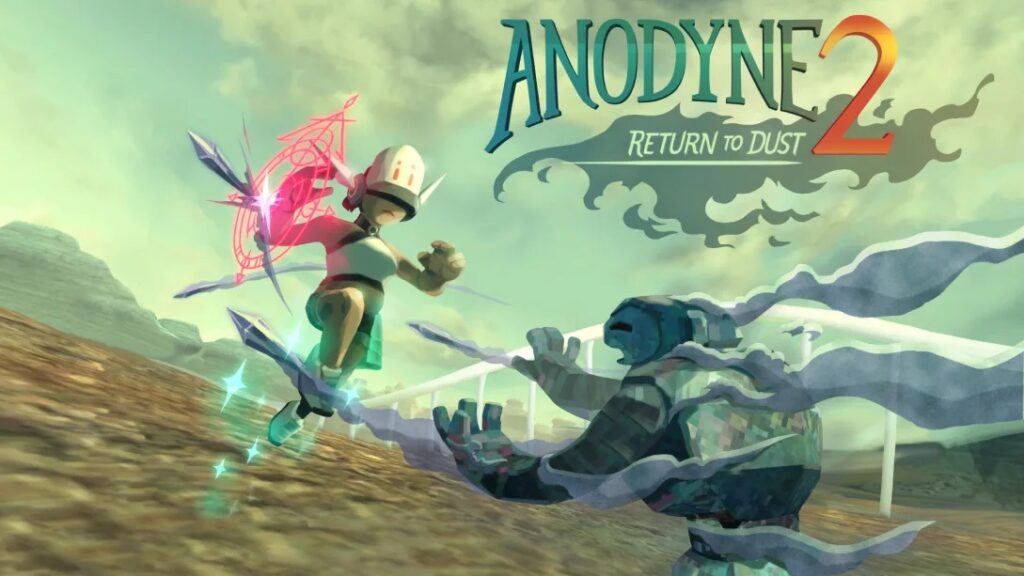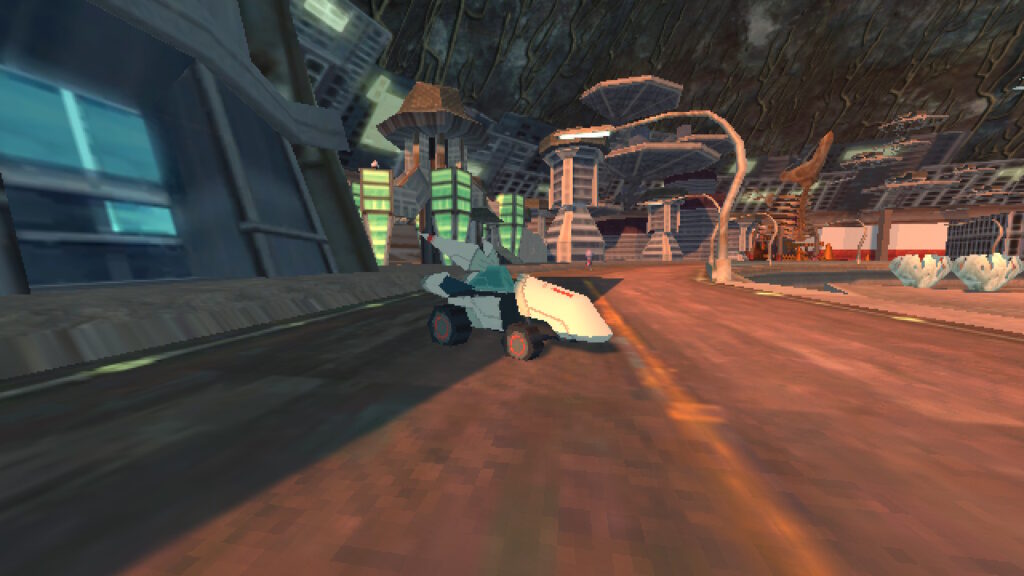
If you’ve played Anodyne, you’re already aware that it’s a clever, introspective little title that showed up out of nowhere. The gameplay looks fundamentally 16-bit, but the dialogue is noticeably more relevant to the real world and provides a fair amount of introspective consideration. Now Analgesic Productions and publishter Ratalaika Games are back with Anodyne 2: Return to Dust and they have expanded what we have come to expect from this funky two-person team.

In Anodyne 2, your goal as Nova is to save the New Theland from the ravages of Dust. The dust infects people, magnifying their mental anguish, internal strife, and emotional states until they are out of control. You have the ability to shrink and enter their bodies, cleaning the dust from inside them to purge their psyches. It’s a weird story that doesn’t make a whole lot of sense until it gets going, and some of the dialogue has to be seen to be believed, as characters encompass a wide range of emotional states and thought processes.

On top of the unique storyline, Anodyne 2 builds on the style set out on the first game. This isn’t a sequel by any means though. The game starts out in full 3D, a significant departure and one that looks like an early Playstation or Saturn game. Creatures are weird and polygon-based and you have camera control as well, rather than a fixed perspective. The collision detection isn’t the best and controls are a bit floaty, but anyone who misses the early polygon era will love this. You can even turn into a car to boot around faster if necessary.

However, inside the bodies of New Theland’s denizens are 16 bit dungeons that look like they’re out of a vintage adventure game. Not quite a Zelda clone perhaps, but at least a reasonable facsimile. Visually, the insides of the creatures you’ll encounter are pretty interesting. You can even go further down, almost like the insides of sub-atomic particles and the graphics change again, reverting to even earlier game styles. The whole design is quite unique and almost like the reverse of other indie titles like Evoland.

Not everything is rosy in Anodyne 2 though. The plot isn’t as immersive as one might hope, and even though the areas are wildly disparate, level structure often feels rather repetitive. As you slowly collect cards, it’s hard to stay focused and occasionally even occasionally hard to figure out just what to do next as some Dust-infected citizens are hiding in places that it’s not immediately clear you can enter. When you do find someone to enter, there’s a fun Dance Dance Revolution-style entrance mini-game where you dodge blasts and dive right into their bodies, definitely a positive. But after a while, you start to wonder how long this is all going to take, especially after the sheer number of issues that different residents seem to have.

Once you get a feel for the game and its controls, things move forward pretty quickly and you’ll blow through Anodyne 2 in about 8 or 9 hours if you don’t get too lost or confused by things. It doesn’t have the same power and impact that the firmer narrative of Even The Ocean had though (which we reviewed here). This is definitely a less-focused, more artistic work that gets weirder as you play and suffers through some noticeable pacing and control issues, as well as a lot of muddy textures that blend together in some areas. There’s a heavy use of dull colors throughout various parts of the game that sets it apart from games from the era it emulates and makes background detail harder to pick out.

It’s difficult to say much else about Anodyne 2: Return to Dust without ruining plot or clever dungeon mechanics. The 16 bit dungeons are definitely the star of the show here, with neat design elements, weirder and weirder structures and backgrounds, and an overall more fun feel. The polygonal sections by comparison feel almost unfinished, definitely tending toward an artistic decision rather than a function one. If you look at Anodyne 2 as an interactive art installation rather than a game, it definitely becomes more impressive, but as a game, the fun factor is limited and the controls are not the best in 3D. The themes of human emotional states and recovery, mental anguish, and other intense concepts are pretty wild though. This is not a game for the average gamer, but one instead designed as a labor of love and artistic expression, best enjoyed by retro-gamers looking for something that pushes the envelope of understanding and fits within the wheelhouse of familiarity. For the majority of players though, it might be best to wait for a discount as they’re likely to try it, get bored or frustrated, and then set it aside before the gameplay becomes interesting enough to capture their attention.

This review is based on a digital copy of Anodyne 2: Return To Dust provided by the publisher. It was played on a Nintendo Switch in both docked and undocked modes and played equally well on both. Anodyne 2: Return to Dust is also available on PC for Steam and GOG, Playstation 4, and Xbox One.

